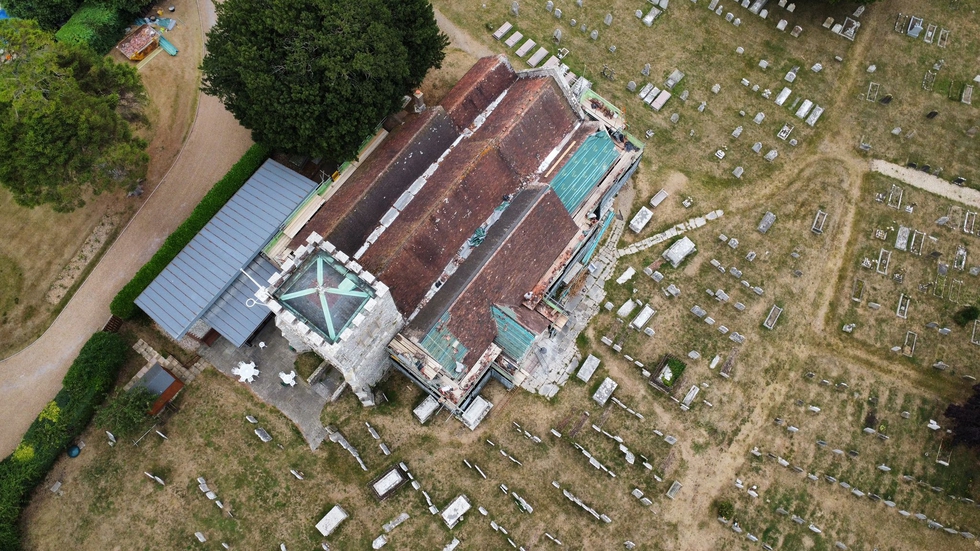Church celebrates green light for solar roof
St Mary's Church Funtington in West Sussex has secured planning permission to fix roof repairs using some of the latest eco roof repair solar systems on the market so the parish can generate its own electricity with surplus going to the national grid.
The works will see the grade 2 listed building join the growing list of churches within the Diocese of Chichester to make the first step to becoming more environmentally sustainable and aiming to reach the Net Zero targets set by the Church of England by 2030.
Fr Andrew Birks, Vicar of St Mary’s said, “Increasing the sustainability of our unique and valuable historic church whilst reducing its future running cost is a major consideration and the PCC are very excited to see our Church becoming a local flagship of this ethos.
“This balance of conservation and evolution is something that the Church of England is very aware of in setting the challenge for Churches to incorporate sustainable technologies.”
Almost ten years ago the PCC were notified that the Church roof was suffering from broken and slipped tiles plus severe “nail rot” and areas of infestation and rot within the underlying roof timbers. At the time adequate local funds were unavailable and therefore two repeated applications were made without success for assistance from Government funds available at that time.
Subsequent quinquennial inspections increased the priority required to be given to these essential roof repairs and therefore funds had to be made available by the sale of a property owned on behalf of the PCC.
Noting that there would be a need to provide a quantity of new tiles to replace those already broken, plus more that were likely to break during their removal, it was decided to reduce this number by the insertion of solar panels into the roof on the southern slopes above the main and north aisles, where they would be much less visually intrusive. This was further considered to be a contribution towards meeting both Government encouragement and important directives within the Church of England to improve energy sustainability and generation from non-polluting sources.
Gaining consent for these works has been protracted because of the numerous consents needed and the necessary sequencing of their submission. Not only was a Faculty needed from the Diocese, but also, because of the building’s Grade 2* listing, local authority planning consent was required. In turn each of these required concurrence of other specialist bodies. Additionally, because bats were known to roost within the existing roof spaces, a licence from Natural England had to be obtained. The latter entailed repeated prior site monitoring surveys, special measures and supervision by an ecologist throughout the works.
The photovoltaic array has been designed to provide a high proportion of the Church’s electricity, although slightly reduced from the maximum possible to meet aesthetic concerns. The generated power will be used to support the electric heating in the Church Room and the recently installed new LED lighting scheme with surplus exported to the grid.
The design of the array has been carefully planned by the Church’s Inspecting Architect, Richard Meynell, to ensure that the panels should be virtually invisible from the ground and thus not cause any visual harm to the heritage asset and its setting. Indeed, there will be slightly fewer panels than initially considered as a number, in the most beneficial solar generating location, were removed from the early plan to meet these aesthetic considerations on a listed building.
The PCC are so pleased to have finally gained the consents and have engaged T.J. Couzens & Son to lead the necessary work.
You can watch drone footage here https://youtu.be/sVjuNVhjwrQ
Church of England’s Net Zero by 2030 information can be found here: https://www.churchofengland.org/resources/churchcare/net-zero-carbon-church
